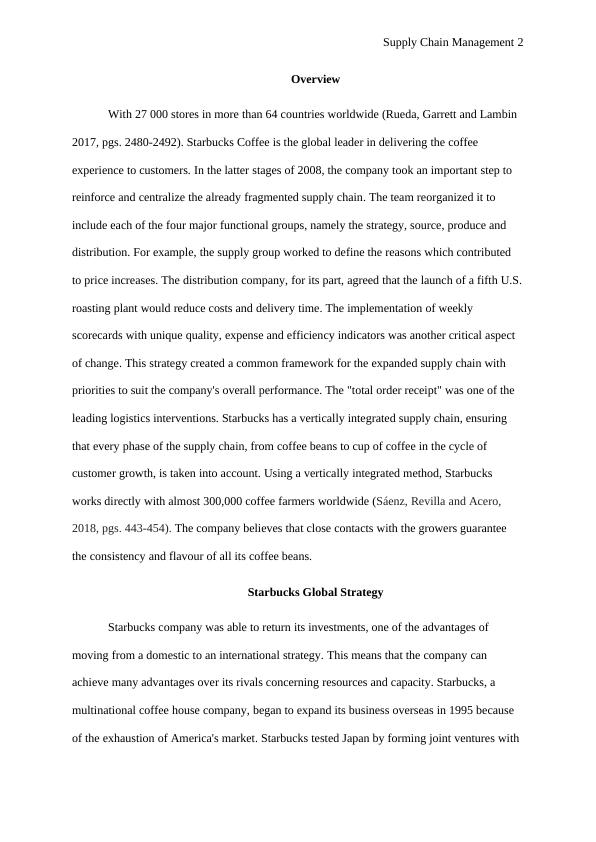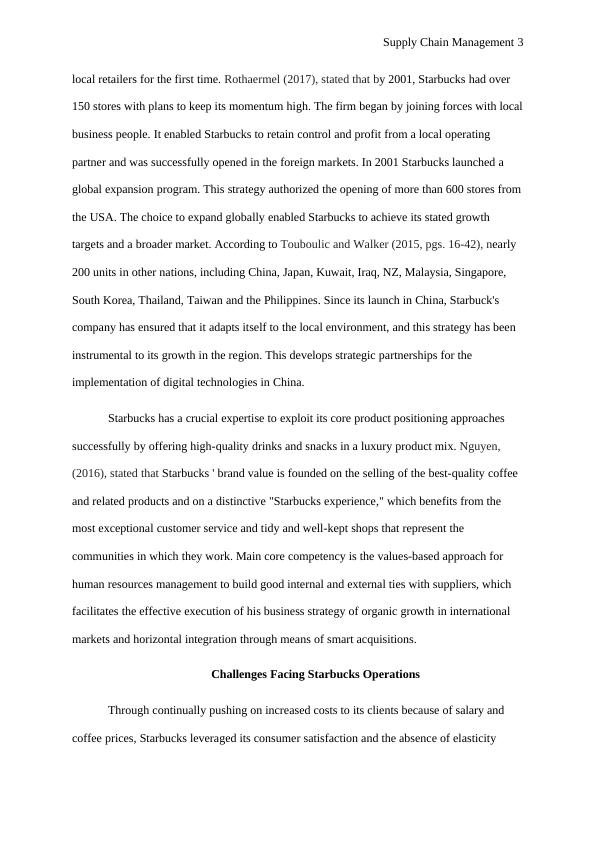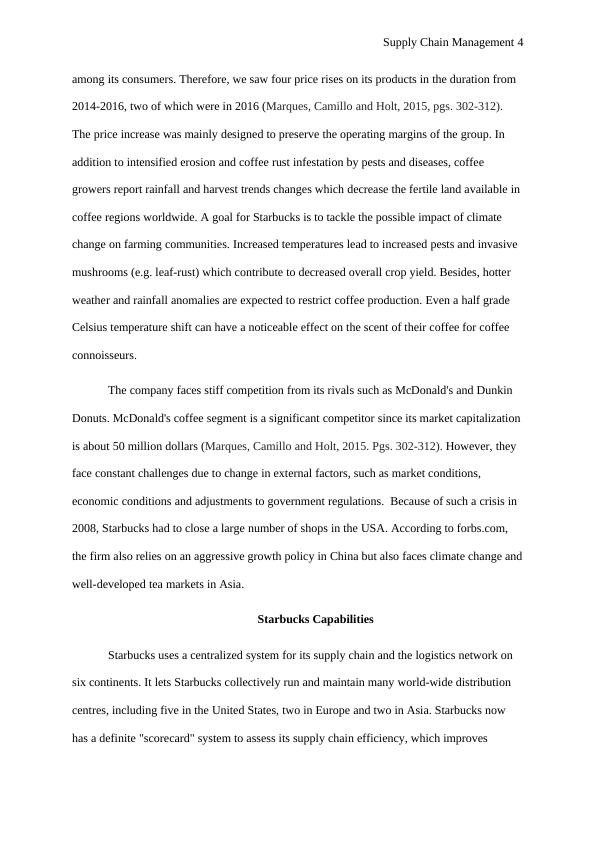Supply Chain Management - Starbucks Coffee
This is a coursework assessment for the MSc Management with Streams Operations Management and Service Excellence module. The assessment requires a written report based on the operations of Starbucks, accounting for 100% of the marks. The submission deadline is 23:59 PM on Thursday, 02 January 2020.
11 Pages3277 Words30 Views
Added on 2022-09-01
Supply Chain Management - Starbucks Coffee
This is a coursework assessment for the MSc Management with Streams Operations Management and Service Excellence module. The assessment requires a written report based on the operations of Starbucks, accounting for 100% of the marks. The submission deadline is 23:59 PM on Thursday, 02 January 2020.
Added on 2022-09-01
ShareRelated Documents
End of preview
Want to access all the pages? Upload your documents or become a member.
Supply Chain Network of Starbucks Company
|8
|1458
|164
Glocalization: Analyzing Starbucks' Success in China
|4
|631
|304
Risk Management in the Supply Chain PDF
|13
|2892
|267
Starbucks New York Case Study 2022
|3
|1132
|49
Environmental Sustainability of Starbucks: Challenges and Solutions
|6
|1540
|151
The Assignment on Management - External Environment Analysis
|18
|5101
|21




